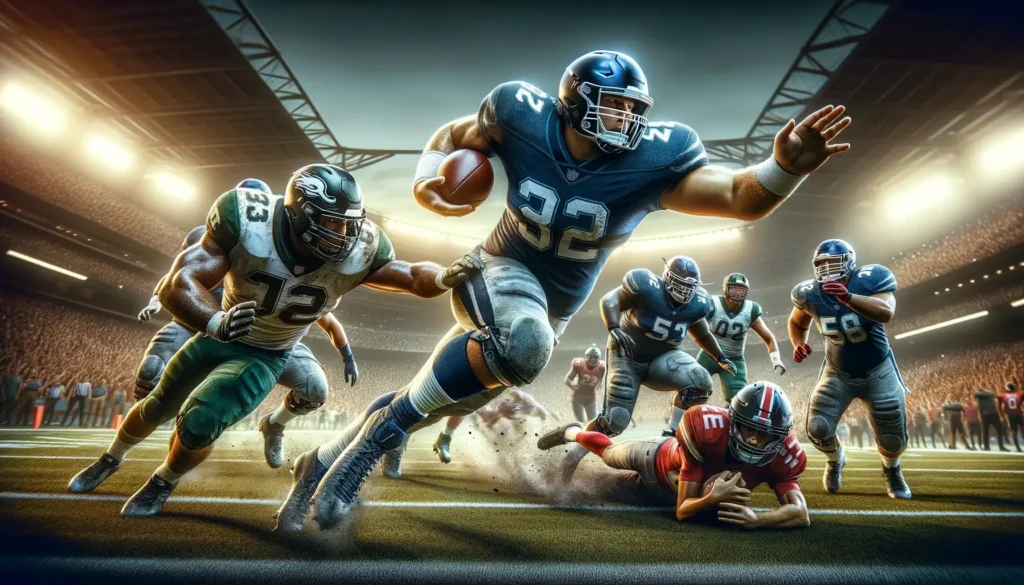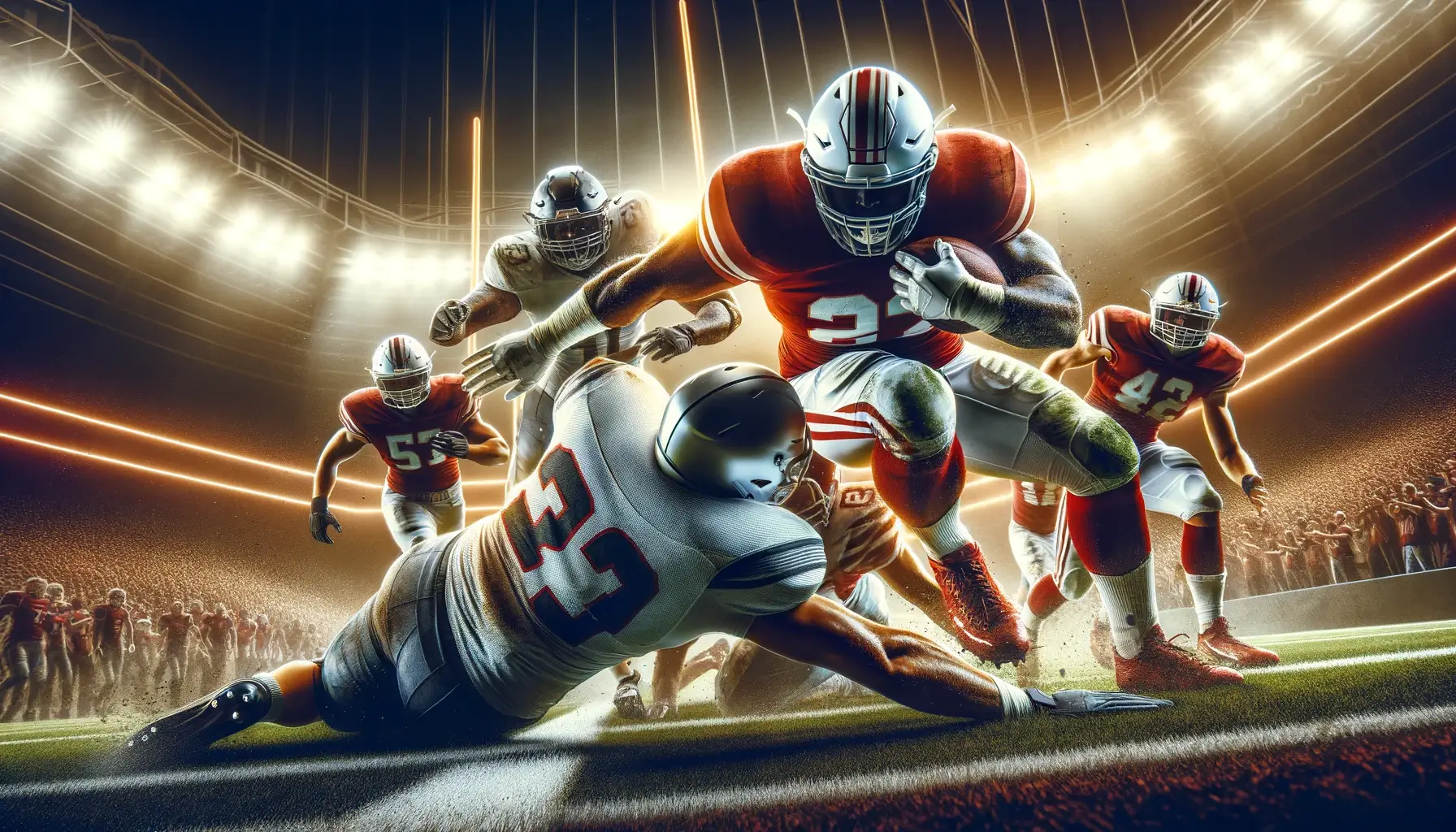What is a TFL in Football: A tackle for loss, or TFL, is a pivotal defensive play in football that often goes overlooked by casual fans.
However, TFL can greatly impact a game and are an important statistic tracked by coaches and analysts.
This article will explain what exactly a tackle for loss is, why it matters, and how it impacts a football game.
Whether you are a die-hard football fan or just a casual viewer, understanding the significance of a TFL can help you appreciate the game on a deeper level.
What does TFL mean in Football in American Football?
Tackle for Loss (TFL) is a crucial statistic in football that occurs when a defensive player tackles the ball carrier behind the line of scrimmage, resulting in a loss of yards for the opposing team.
This action demonstrates the defense’s ability to disrupt offensive plays and can significantly impact the momentum of the game.
While often confused with a sack, TFL is broader; it includes any tackle that causes a yardage loss, not just those of the quarterback.

The Mechanics of a Tackle for Loss
TFL usually happen when a defender, such as a linebacker or defensive lineman, penetrates the offensive line and tackles the ball carrier in the backfield.
This requires agility, strength, and the ability to anticipate or read the opposing team’s play. Defensive players aim to tackle for loss to disrupt running plays or short forward passes, often changing the course of an offensive drive.
TFL in Football Statistics
TFL is a key metric in football statistics, highlighting a team’s defensive prowess. It’s a direct measure of how effectively a defense can disrupt the opposing team’s offensive strategy.
In the NFLs, TFL stats are closely monitored as they can indicate a team’s or player’s ability to control the line of scrimmage and impose defensive pressure.
The Impact of TFL on Game Strategy
The occurrence of a TFL can significantly disrupt the opposing team’s offensive game plan. It creates longer yardage situations for the offense, making it harder to score or achieve a first down.
TFL can also shift the momentum of the game, boosting the defensive team’s morale while putting psychological pressure on the offense.

TFL in Fantasy Football: A Valuable Metric
In fantasy football, TFL can contribute valuable points, making players who frequently make tackles for loss hot commodities.
Fantasy league enthusiasts often track players known for high TFL numbers, as these stats can turn the tide in fantasy matchups.
Key Players Often Involved in TFLs
Linebackers and defensive linemen are typically the key players in executing TFL. Their position and role on the field allow them to be in the best place to penetrate the offensive line and make tackles behind the line of scrimmage. Some NFLs players have become famous for their consistent ability to record TFL, becoming integral parts of their team’s defensive strategy.
How Coaches Plan to Increase TFLs
Coaches employ various defensive strategies and formations to increase the chances of TFL. This includes focusing on agility and penetration drills in training, as well as strategizing blitzes and defensive line movements to outmaneuver the offensive line.
The Historical Significance of TFLs in the NFL
TFLs have been a part of memorable moments in NFLs history. Certain games and seasons have been defined by record-breaking TFL performances, highlighting the skill and impact of defensive players in the league.
TFLs in College Football vs. the NFL
While TFL is a significant stat in both college football and the NFL, there are differences in how it’s achieved and its frequency due to varying play styles and rules in each level.
College football often sees more TFL due to a wider variety of offensive styles and less polished offensive line play compared to the professional level.
Future of TFLs in Football Evolution
As football evolves, the significance and strategy around TFLs continue to adapt. Rule changes and shifts in offensive strategies can affect how defenses approach TFL, making it an ever-evolving aspect of the game.

Conclusion -What is a TFL in Football
In conclusion, TFL are game-changing negative plays that can completely swing momentum. When a defense is constantly tackling ball carriers in the backfield for losses, it disrupts the timing of the opposing offense.
This leads to rushed throws and sacks of the quarterback, resulting in fumbles or interceptions. TFL also force offenses into more obvious passing situations, allowing defensive backs to key in on receivers running routes.
The combination of lost yardage, turnovers, and punts gives the ball back to the offense with great field position.
TFL lead to a cascade of events that flip field position and facilitate takeaways – exactly the kind of turnover impact that wins football games.
FAQs
Q: What is a TFL in football?
A: A tackle for loss – the defense tackles an offensive player behind the line of scrimmage.
Q: How do TFLs impact a game?
A: By disrupting drives, pinning the offense deep, and flipping field position.
Q: Which defenders record the most TFLs?
A: Linemen, linebackers and aggressive defensive backs.

Mark Wilson is a sports writer who loves to share stories about different sports like baseball and soccer. He grew up in Chicago, USA, and always enjoyed watching and playing sports.





